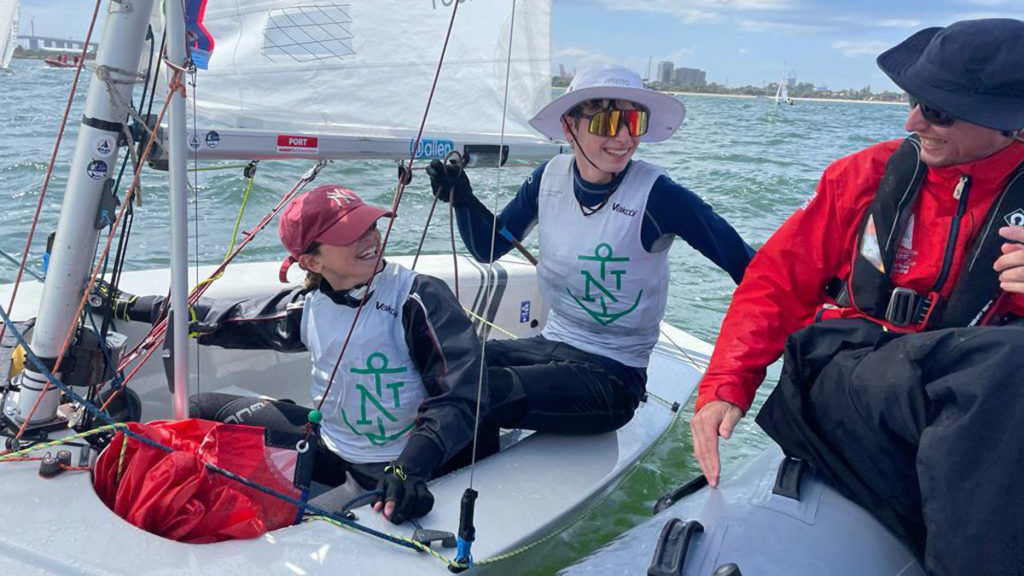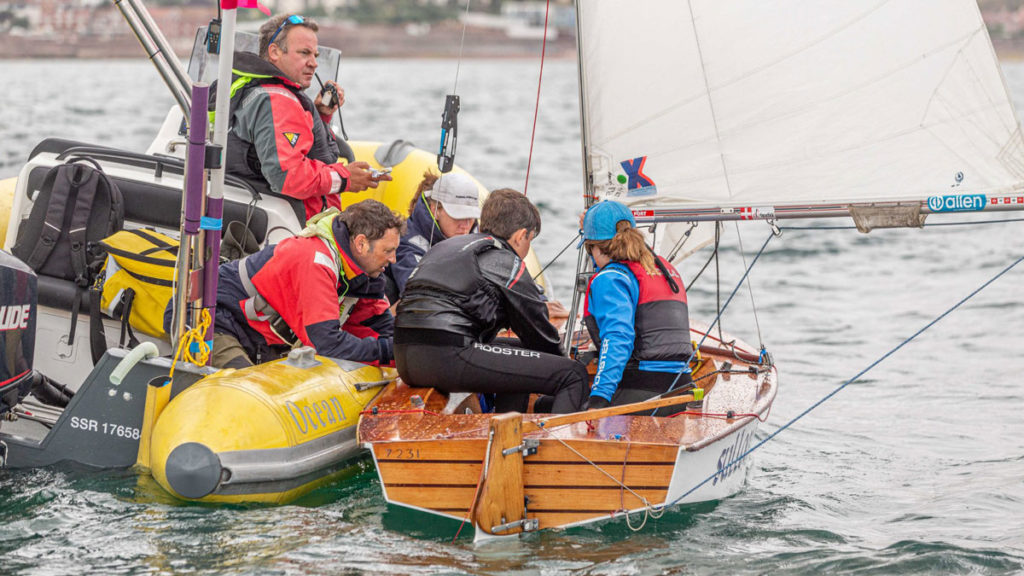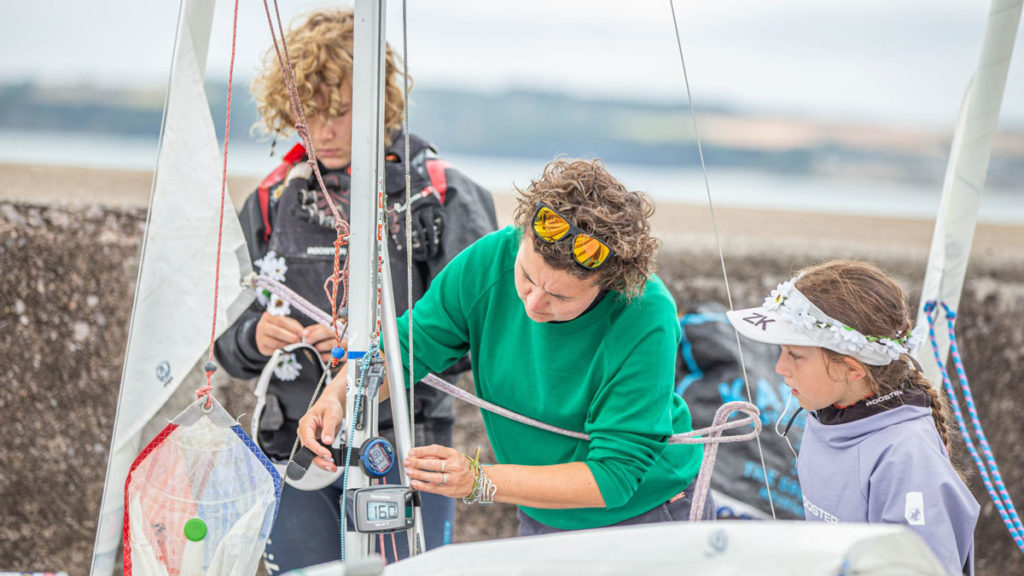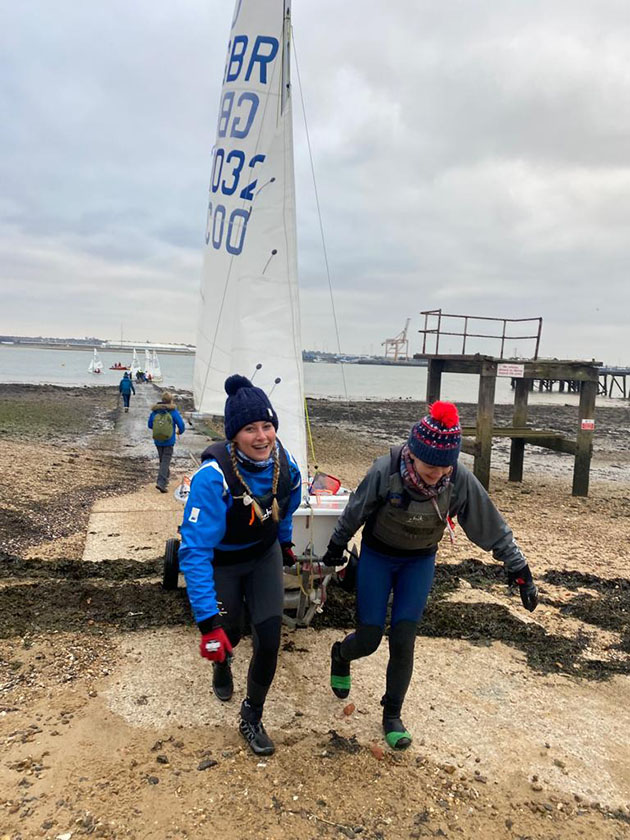By Alice Thorogood
When your child starts dinghy sailing for the first time, it can be daunting to know what they need, especially if you are not a sailor. Credit: Alice Thorogood
Before my children joined the cadets I had very, very little experience of sailing. Everything was alien to me, from the sailing language, the kit they needed to what it meant to spend a day out on the water.
I clearly remember sending my eldest into the changing room on her first days sailing with a shortie wet suite and trainers, only for her to emerge bundled in borrowed kit. That is one of the many wonderful things about the Cadets; we are a friendly bunch; we watch out for the newbies and make sure they are fully kitted out.
That said, I wish I had a bit of an idiot’s guide to get me started, so this, my dear new sailing parent, is what I wish I knew when I first put my child in a Cadet dinghy.
What is a day on the water like?
I have to admit, at the beginning, I was surprised by the length of time the sailors were out on the water AND in all sorts of weathers! It is not unusual for them to gone for four hours without coming back in, particularly at an event. Making sure they head out with everything they need to keep them warm, fed and watered is essential. It is worth remembering that everyone out on the water with the sailors are parents or ex-Cadets or both, so no sailor is going to be left to cope on their own. Safety boats are on hand to help older helms look after the younger crews and are happy to bring in sailors who are cold or want a comfort break.
A safety boat is always on the water. Credit: UK National Cadet Class Association
The Kit
First things first, the sailors don’t care about brands, so don’t panic about having to by the most up to date kit; your new sailor is definitely not going to have the micky taken out of them for having a second-hand wetsuit. So, hit eBay or ask around the sailing club see if anyone is having a clear out.
You will need:
- A decent long wet suit. All my children sail in “Skiff” wet suits– think sleeveless with a dungaree style top half. Other sailors prefer long sleeves, as your sailor becomes more experienced they will have their preference. When there are starting out, any long, half-decent wetsuit will do.
- Base Layers. We have a range of rash vests, and some thermal style, fleece-lined layers. On warm days one rash vest under the wetsuit is fine. On really cold days you might want to put two or maybe even three layers on!
- Leggings. If it’s a warm day, or you have gone for a thick wetsuit, then you might not need these. But, if your sailor is crewing and it’s a cold day, then a pair of thin, thermal leggings are great under the wetsuit!
- Splash vest. A good splash vest is a vital bit of kit. Fleece-lined ones are a good investment and my sailors tend to wear these all year round. They come in lighter styles too, ideal for summer sailing.
- Gloves. I didn’t really take on board at the beginning how important this bit of kit was! There are SO many to choose from, and they can get a bit pricey…particularly if your sailor doesn’t always bring them home! Your sailor will work out what style they like best. We tend to go for the slightly less expensive, nylon, with grippy latex palms. This is because my children are terrible at looking after their gloves and don’t tend to wear them more than five times! If money was no object and my sailors cared for their kit I would go for Rooster Hot Hands; sturdy over-gloves with silver-lined inners, excellent for cold days on the water!
- Boots! Definitely worth asking about for boots, I think I am not alone in having a glut of them that my children have grown out of! We found sailing boots with a zip up the side partially useful and always go for a size up to make room for socks.
- Socks, you can choose from swanky silver lined neoprene type socks or actual socks. My sailors opt for ski socks under their boots.
- Hat. A good woolly hat is essential!!
- Buoyancy aid. I guess this one goes without saying but, a good, newish buoyancy is obviously the most important thing you can put on your sailor.
- A buff style scarf or two are also a great purchase.
Other kit you will start collecting along the way. In the summer you might go for wetsuit shorts and if your sailor is a real keen bean and gets into winter sailing, a dry suit is a great piece of kit (although a big investment). These are all-in-one suit that completely, hermetically, seals in your sailor. A bear suite onesie is worn as a base layer, ensuring that they are warm and dry on the water (though toileting is more difficult!) Oh, one little tip with dry suits; getting sailing boots off them can be challenging (to say the least) a dog poo bag over the suit’s feet helps the boot slide on – and off.
Snacks
Sometimes the sailors spend up to four hours on the water, so as well as keeping warm, it’s important to keep them well fed. I tend to pack high energy, easy-to-eat food that won’t spill around the boat. For my sailors a typical food pack looks like this:
- A wrap rolled into a tube shape – easy to unwrap and hold on while moving, choose something like ham and cream cheese as the filling
- Dried mango – sweet and high energy
- Cereal bars
- Yogurt in tube form
- Don’t forget to pack a water bottle!
- PS…I do also pack quite a few sweets, things like jelly babies to give them a boost on a long day…shh! don’t tell the others.
Toileting
The best investment you can make once you have the basic kit is wetsuit cleaner. Not to be too blunt most of the sailors will end up having a wee in their wetsuit at some point. A bit of wetsuit cleaner and a rinse cycle in the washing machine sorts it right out! Bicarbonate of soda also works well.
If you are new to dinghy sailing, you will soon find yourself learning new skills. Credit: Alice Thorogood
We aim to have a mothership out in the water at larger events for sailors who feel the need for a Number Two. Where this is not possible sailors will be told in briefing how long they can expect to be out on the water so they can make poop plans. Of course, in an emergency, sailors can be bought in on the safety boat, no one should be uncomfortable!
Periods
Handling a period out on the water can be tricky. The UKNCCA are committed to ensuring that no sailor is at a disadvantage if they are out on the water when they on their period. We try our best to make sure there is a mothership at events with breaks in racing to ensure sailors can change sanitary products. Where it is not possible to have a mothership, we make sure sailors are fully informed at briefing on how long we anticipate being out on the water so that they can make their own plan at how best to cope with their period. We also do our best to keep a stock of sanitary products in the mothership.
The UK National Cadet Class Association is committed to ensuring that no sailor is at a disadvantage, and has taken steps with the RYA to address the issue of periods and sailing. Credit: Alice Thorogood
I think the main thing we want to get across to our sailors is there is no taboo around periods; if you need help or advice, we are all approachable and able to assist.
We have been working alongside the RYA who have produced a useful presentation on periods and sailing.
There are many sanitary products available that might be useful for sailors. I have absolutely no medical training, this advice comes from my own research.
Pads are great if used with a dry suit, but obviously tricky with a wetsuit.
Period underwear has been quite a game changer for my sailors. Fitting just like pants but with in built period protection they came in a range of flow types. Period swimwear is also available; this offers an extra layer of protection out on the water.
It’s worth thinking about taking a little plastic bag out in the water with you should you need to swap pants over on the mothership.
Tampons are another great solution, although they can be tricky to get use to and to dispose on the mothership. Tampons are a personal choice and may be more suited to older sailors
Menstrual cups are worth a mention though might be more suitable for older sailors. There are many on the market and are THE environmentally friendly choice. Definitely worth looking into as an alternative to tampons for older sailors
Congratulations on your new job!
Getting the kit, sorting out the food, washing pee out of wetsuits are now all part of the job description of “sailing support team”. It can be hard work at times, but it is genuinely brilliant fun! Yes, joining the Cadets has been good for my children; they have flourished, becoming good sailors and made friends from all over the world. They have become more, determined, resilient and confident. But…I have also made some excellent friends, I have learnt new skills, travelled to new places and enjoyed the support of fellow sailing parents.
Welcome to the UKNCCA family!

Alice Thorogood
RDA member Alice Thorogood is the Safeguarding and Welfare officer for GBR Cadet Sailing (cadetclass.org.uk). She has three children currently in the Cadet squad at Waldringfield Sailing Club in Suffolk and has recently returned from supporting them in the Cadet World Championships in Australia.




